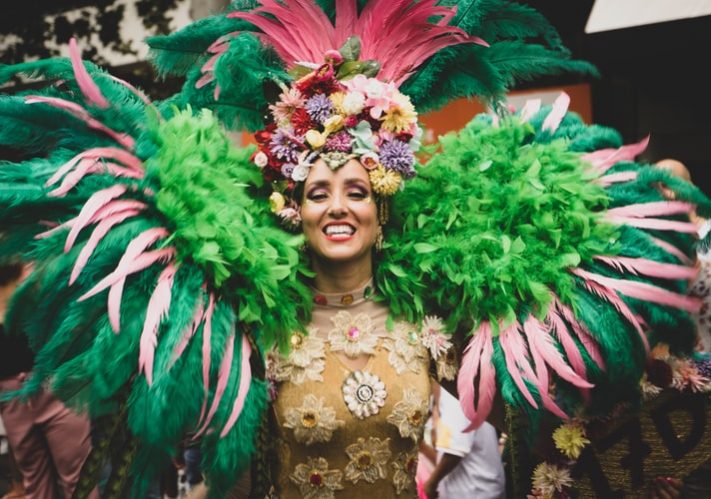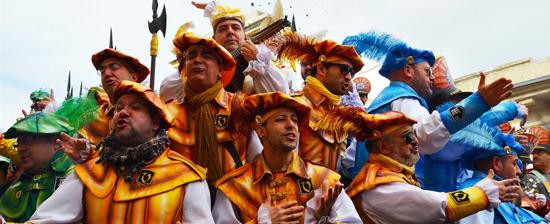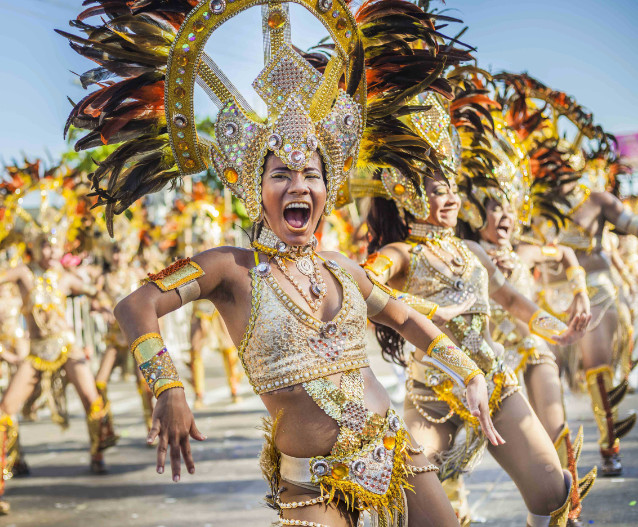
Foto por @ugurarpaci
Carnaval is one of the most fun and important parties on the planet, but especially in Latin culture. It is a celebration that is lived in the street, where people dress up in colourful costumes and masks, in addition to non-stop singing and dancing!
But from where and when did Carnaval originate?
The origin of the event is shrouded in the mists of history… but it’s believed to have originated with the pagan festivals of ancient Egypt, more than 5000 years ago. From there the tradition passed to the Roman Empire, and then to all of Europe.
Carnaval arrived in the Americas with the Spanish and Portuguese colonizers of the 15th century. And, although the church does not admit it as a religious holiday, the reality is that it maintains a strong presence in the predominantly Catholic countries.
How is this party celebrated in the Hispanic World?
In Spain, people start preparing months in advance, as many people create their elaborate costumes themselves. Groups of friends may come together to create chirigotas, humorous songs, which are then sung in local competitions.
The party begins before Cuaresma, with the famous Lardero Thursday, and ends on Miercoles de Cenizas (Ash Wednesday) with the Entierro de la Sardina (the Burial of the Sardine) a procession which culminates in the burning of a large (fake) sardine – a symbolic “burial” of the past, and a chance for all to start anew. In Spain, you’ll see the events at their grandest scale when you visit:
- Santa Cruz de Tenerife
- Las Palmas de Gran Canaria
- Cádiz

Hombres celebrando en Cádiz (https://spain.info)
In Latin America, indigenous cultures have a strong influence on the festivities. Costumes are true works of art, full of colour. Dancing to the salsa and reggaeton rhythms is of paramount importance. During the Carnaval period, anywhere you go you’ll see people dancing, but especially in:
- Oruro, Bolivia
- El Callao, Venezuela (video)
- Barranquilla, Colombia
Now that you know a little more about Latin culture, you’ll need to pick up some key terms to get the most out of your Carnaval experience. What do you think are the key terms you’d like to know?
“El Carnaval en el Mundo Hispano”
El carnaval es una de las fiestas más divertidas e importantes del planeta, pero sobre todo en la cultura latina. Es una celebración que se vive en la calle, donde las personas se disfrazan con coloridos trajes y máscaras. Además, se canta y baila sin parar.
¿Pero cuándo y dónde surgió el carnaval?
Lo cierto es que se desconoce su origen, pero los historiadores piensan que puede estar en las fiestas paganas del antiguo Egipto, es decir hace más de 5000 años, y de allí la tradición pasó al imperio Romano y después a toda Europa. Finalmente, llegó a América con los colonizadores españoles y portugueses en el Siglo XV. Y, aunque la iglesia no la admite como una fiesta religiosa, lo cierto es que está vinculada con los países de tradición católica.

Ahora bien, ¿cómo se celebra esta fiesta en el mundo hispano?
En España, la gente empieza a prepararse con meses de antelación, pues muchas personas cosen los disfraces ellos mismos. Además, hay grupos de amigos que se juntan para crear chirigotas, canciones humorísticas, que luego cantan en concursos locales. Esta gran fiesta popular y de carácter lúdico, comienza antes de la Cuaresma, con el famoso Jueves Lardero y termina el Miércoles de Cenizas, con el entierro de las sardinas. Los carnavales más famosos son los de Santa Cruz de Tenerife, Las Palmas de Gran Canaria y Cádiz.
En Latinoamérica, esta fiesta adoptó elementos de las culturas indígenas. Aquí, son muy importantes los disfraces, verdaderas obras de arte llenas de color. Pero, sobre todo, lo fundamental es bailar al ritmo de salsa y reggaetón. En estas fechas vayas donde vayas ves personas disfrazadas y bailando. Además, hay un gran concurso de peñas para enseñar sus vestidos y coreografías. Muestra de ello son los famosos Carnaval de Oruro en Bolivia, el Carnaval de El Callao en Venezuela o el Carnaval de Barranquilla en Colombia.
Ahora que ya conoces un poco más sobre la cultura latina, anímate y ¡aprende español!
